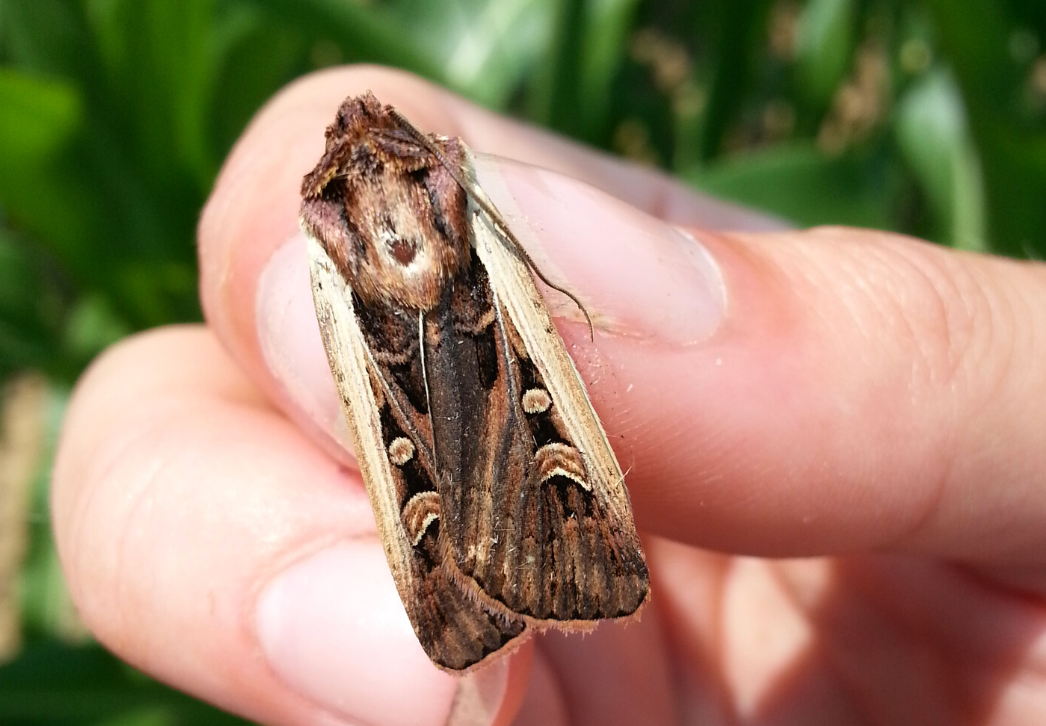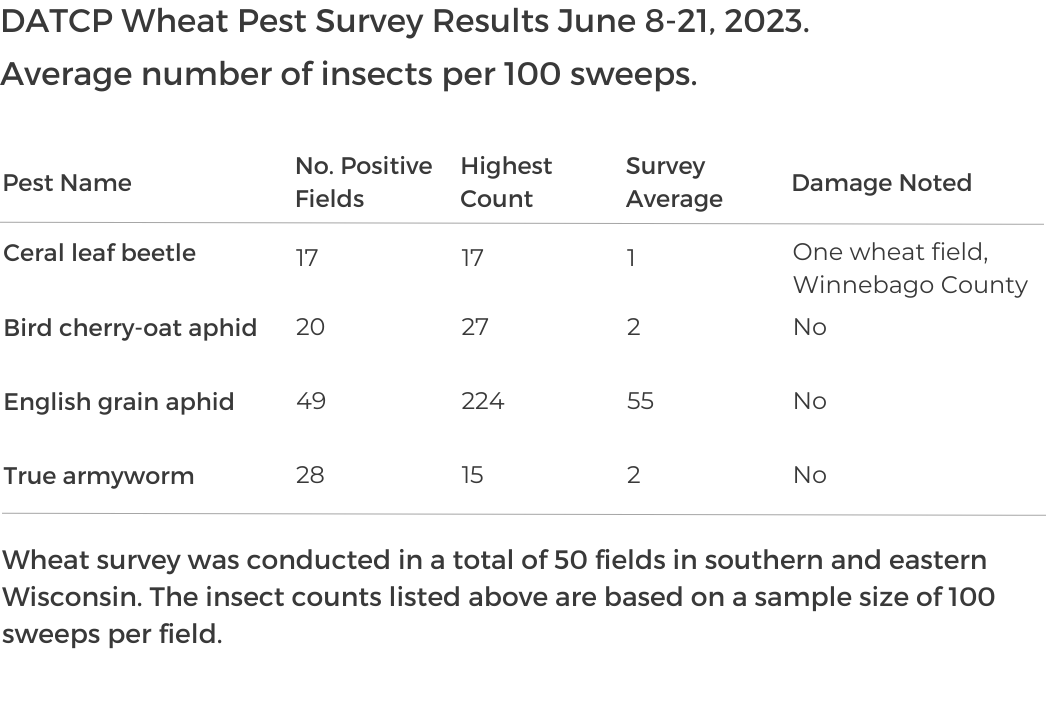|
|
Beneficial weekend rain fell across much of the state, providing some relief from increasing June dryness. Highest accumulations (1.5 inches or more) were concentrated in the north. A few places such as Chetek (1.81 inches) and Rhinelander (1.96) reported nearly two inches on Sunday. Rainfall was highly variable and lighter farther south, where the visible impacts of this month’s persistent dry weather on crops and landscapes are more apparent.
According to the latest U.S. Drought Monitor (see map below), the majority of Wisconsin is now experiencing Moderate Drought (D1), while parts of the southwest—including areas in Columbia, Crawford, Dane, Grant, Iowa, Richland, Rock, Sauk, and Vernon Counties—and a small pocket in the northwest corner of Douglas County, are in Severe Drought (D2). Precipitation deficits for the 30-day period ending June 29 ranged from 3-7 inches in southern Wisconsin, with the largest deficits of 5-7 inches in the area south of Interstate 90.
In addition to contending with drought conditions, Wisconsin also endured the worst air quality on record since the Air Quality Index (AQI) to measure air pollution was initiated in 1999.The state daily AQI average was 225 in Milwaukee on June 27, far surpassing the previous record average of 165. Both Madison and Milwaukee recorded “hazardous” AQI numbers in the 300s this week from dense wildfire smoke. Hazy conditions reduced visibility and prevented spongy moth spray planes from taking off for much of the day on Tuesday and halted spray operations on Wednesday.
__________________________________
|
|
 Western bean cutworm moth | OSU.edu
  The annual flight of western bean cutworm (WBCW) moths has started in Wisconsin. The season’s first captures were registered last week at Grand Marsh and Hancock, and the East Troy black light trap monitoring site reported two moths June 23-29.
Based on the UNL-UMN cumulative flight model for this insect, 25% emergence of the moth population should occur July 12-25 across the southern half of the state. Scouting corn plants for egg masses and small larvae is recommended as fields enter the late-whorl and pre-tassel stages. The eggs are laid on the upper surface of the top 3-4 leaves, often on the flag leaf, and the larvae can be found in developing tassels. In fields where egg masses and small larvae are found on 5% or more of the corn plants, an insecticide treatment applied when 90-95% have tasseled is most effective.
Moth counts will be available through mid-August on the DATCP Western Bean Cutworm monitoring network page. In addition, WBCW degree day accumulations are provided in the modified base 38°F column in our degree day table. The lower threshold for WBCW is 38°F while the upper threshold is 75°F. Once 2,577 degree-days are reached, 25% of the WBCW flight has occurred and scouting should begin.
|
|
 __________________________________
|
|
Surveys in wheat fields across the southern and east-central areas of the state earlier this month found low insect counts, and very few foliar disease symptoms due to prevailing dry conditions.
During the two-week period from June 8-21, DATCP specialists sampled 50 fields in the following counties: Brown, Calumet, Dane, Dodge, Door, Fond du Lac, Kewaunee, Manitowoc, Sheboygan and Winnebago. These counties contain the majority of the wheat acreage in the state.
In each field, sweep net samples for cereal leaf beetle, aphids, and true armyworm larvae were made at four sites (25 sweeps per site, 100 sweeps total per field). A sample consisting of 20 wheat plants was also collected from each field for disease testing at the DATCP Plant Industry Bureau Laboratory.
The table and map below show the results of the insect sampling. English grain aphids were present at low to moderate levels in all but one of the fields, true armyworm larvae were found in low numbers in 28 of the fields, and cereal leaf beetle was collected from 17 of the fields. Overall, insect counts were below economic levels and damage was not observed.
One exceptional Winnebago County site had a cereal leaf beetle count of 17 adult beetles per 100 sweeps and larvae were abundant on wheat foliage. The surveyor estimated 10% of plants in the field were showing defoliation and flag leaf feeding. Cereal leaf beetle populations must reach or exceed one larva per flag leaf when grain is heading to qualify for treatment. Since the larval stage for cereal leaf beetle is brief and requires only about 10 days to complete, peak feeding may have already occurred in southern and eastern Wisconsin. |
|
  __________________________________
|
|
 __________________________________
|
|
|
|